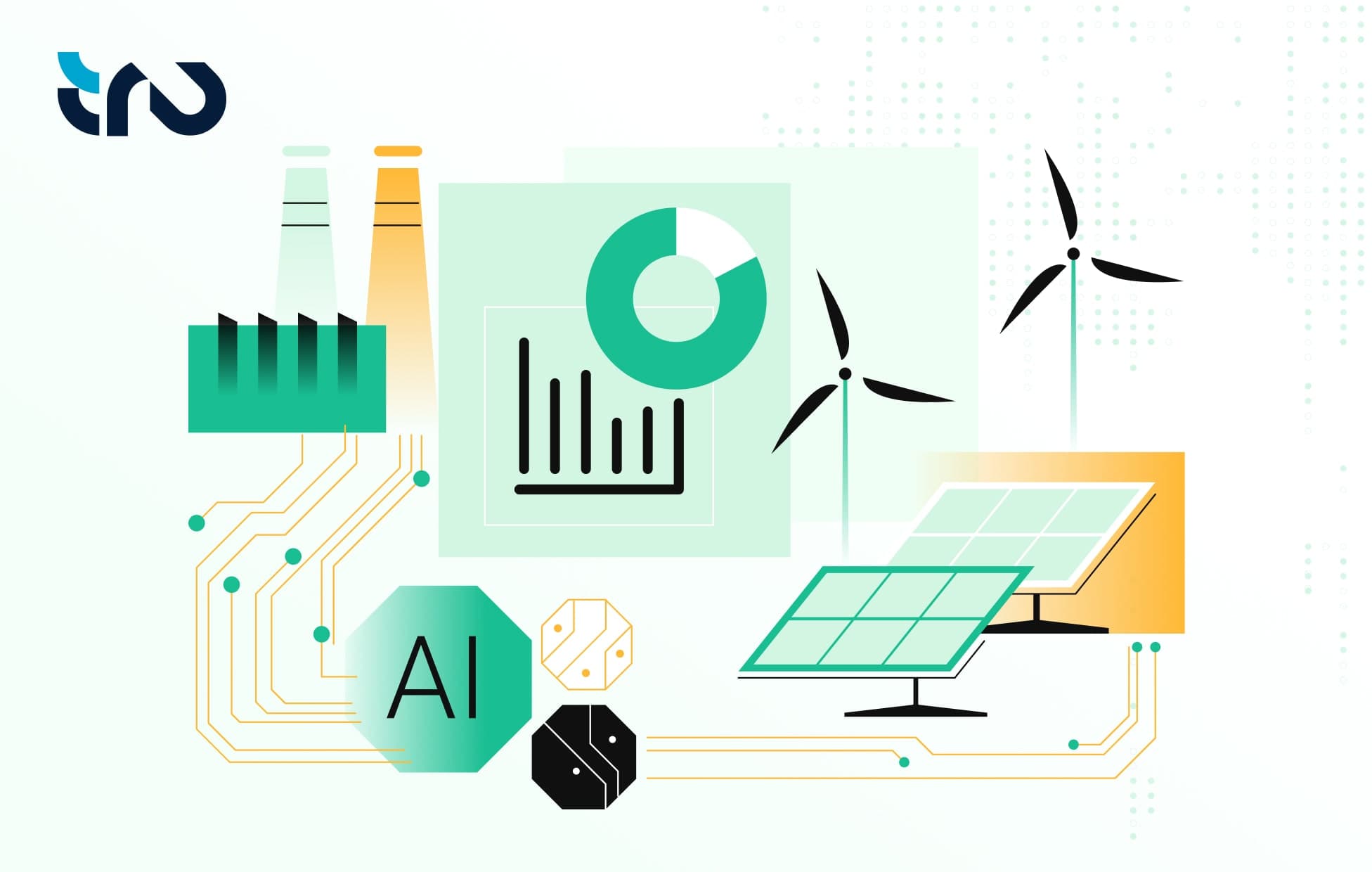Imagine your lights stay on during storms, energy bills are lower, and you get updates the moment there’s a power outage–all without any effort. This is the new reality for power and utility companies embracing digital solutions.
According to the International Energy Agency reports, by 2025, digital services are expected to generate $1.3 trillion in value for the energy sector and $299 billion for utilities. This shift will define who thrives in a smarter, cleaner energy future.
As electric cars, smart homes, and growing energy demands push old systems to the limit, traditional methods just can’t keep up. That is why more industries are turning to modern technology that helps predict issues, prevent outages, and deliver better services.
Let’s dive right in to explore how digital transformation solutions are shaping the future of utilities.
Challenges With Traditional Approaches
Power and utility industries have relied on traditional methods for many years. However, in today’s environment, these methods present several critical challenges:
1. Aging Infrastructure
Many power grids and systems are outdated. This leads to frequent breakdowns and expensive repairs. As energy demand rises, these legacy networks struggle to deliver reliable performance.
2. Inefficient Energy Management
A lot of work is still done by hand or old machines. These manual operations and outdated equipment slow down the process and increase the risk of errors. This adds to operational costs and makes it harder to respond quickly to growing energy needs.
3. Difficulty in Integration of Renewables
As more industries shift to solar and wind energy, traditional systems fall short. They struggle with handling the variability of renewable sources, resulting in unstable supply and missed opportunities for cleaner energy use.
4. Rising Customer Expectations
Modern customers expect power and utility companies to offer instant services, transparent updates, and options that match their needs. Legacy systems make it difficult to meet these customers' expectations, leading to poor user experience and posing a potential customer loss for industries.
How Digital Transformation Solves Power and Utility Industry Challenges?
Digital solutions are helping power and utility companies tackle industry challenges by streamlining operations, reducing costs, and improving customer experience. Check out the detailed list of digital transformation strategies below:
1. Cloud Platforms and Data Optimization
Cloud-based platforms give utilities real-time insights into operations. This enables faster decisions, better grid reliability, and stronger customer service. Companies use centralized data, AI models, and predictive tools to reduce risks and improve efficiency. These digital solutions are driving meaningful energy sector innovation.
2. AI-Driven Predictive Analytics
AI helps predict equipment failures before they happen and accurately forecasts energy demand. This reduces downtime and lowers maintenance costs by enabling proactive repairs and smarter planning.
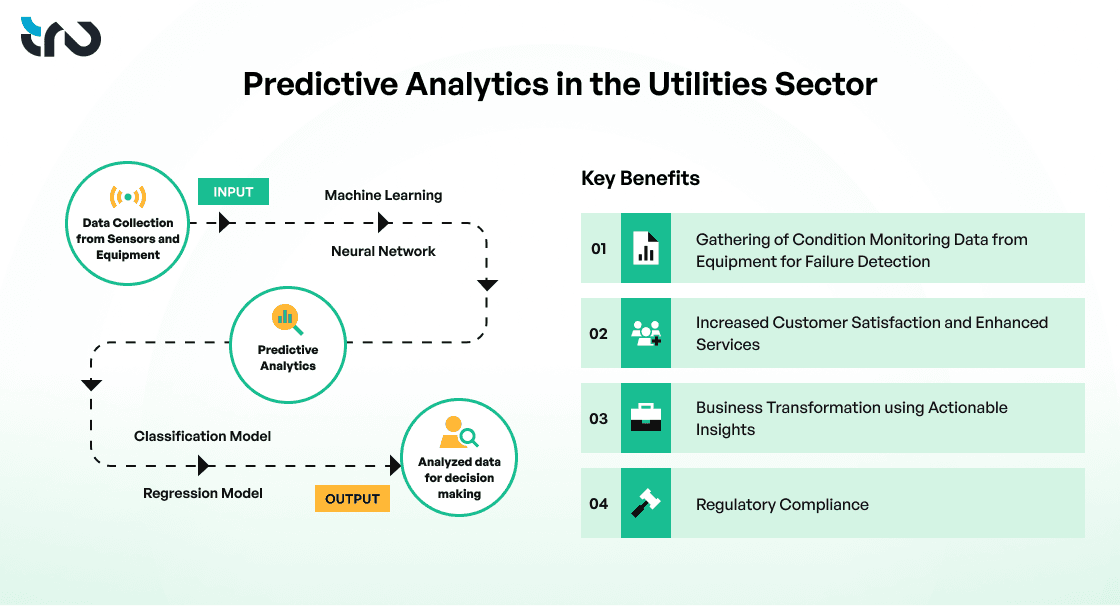
3. IoT and Real-Time Analytics
IoT (Internet of Things) enabled systems track equipment conditions in real-time. With continuous data flow, industries can detect any early signs of failure and prevent disruptions. This leads to fewer outages and more reliable performance across the grid.
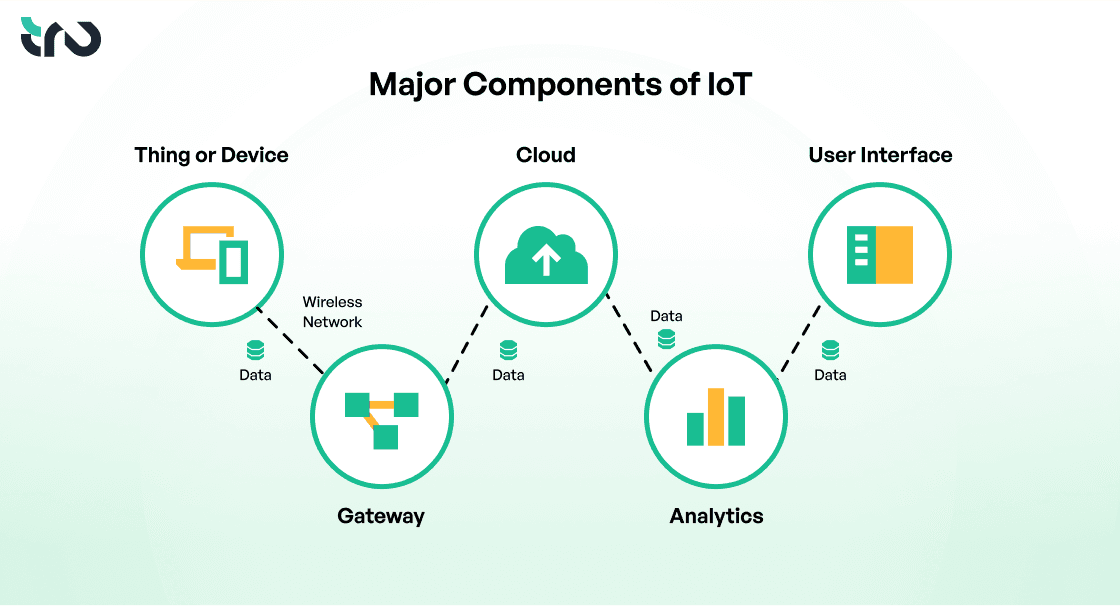
(This infographic shows major components of IoT working together to collect, transfer, and analyze data in real time. This enables smarter monitoring, faster response, and improved equipment reliability.)
4. Forecasting Future Energy Needs
Artificial Intelligence tools analyze patterns in usage and weather to forecast future energy demands. This supports a better supply-demand balance and minimizes energy waste.
5. Digital Customer Engagement
Digital interfaces like self-service portals and real-time updates improve how utilities connect with customers. This builds transparency, increases satisfaction, and encourages long-term loyalty.
6. Proactive Threat Detection and Security
AI-driven tools monitor for cyber threats and system anomalies. These systems can act before damage is done, helping utilities stay compliant and secure.
Explore Tru’s complete suite of digital solutions for power and utilities companies. See how our AI, Cloud, and data services can modernize operations and drive smarter results.
Real-World Examples of How Power and Utilities Are Using Digital Innovation
Digital transformation is already happening across the industry. These examples show how utilities are solving challenges with smart technologies.
• AI-Driven Grid Investment
A renowned U.S. utility company powering over 7 million homes and businesses plans to invest $48.5 billion by 2030 to upgrade its grid. The focus is on strengthening infrastructure to support future electricity demand–especially from AI-powered data centers.
Since early 2025, as per reports by Reuters, the company has reported a surge of nearly 7 gigawatts in new connection requests. In response, it is prioritizing automation and intelligent systems to deliver power more efficiently and reliably.
• Digital Twin Technology Boosts Grid Management
A renowned Southern California company uses digital twins, which are digital replicas of their real-world infrastructure. These models help the company predict issues, like trees hitting power lines during storms.
By using the solution, they reported a 50% improvement in grid performance, leading to fewer outages and faster issue resolution.(Source: Time)
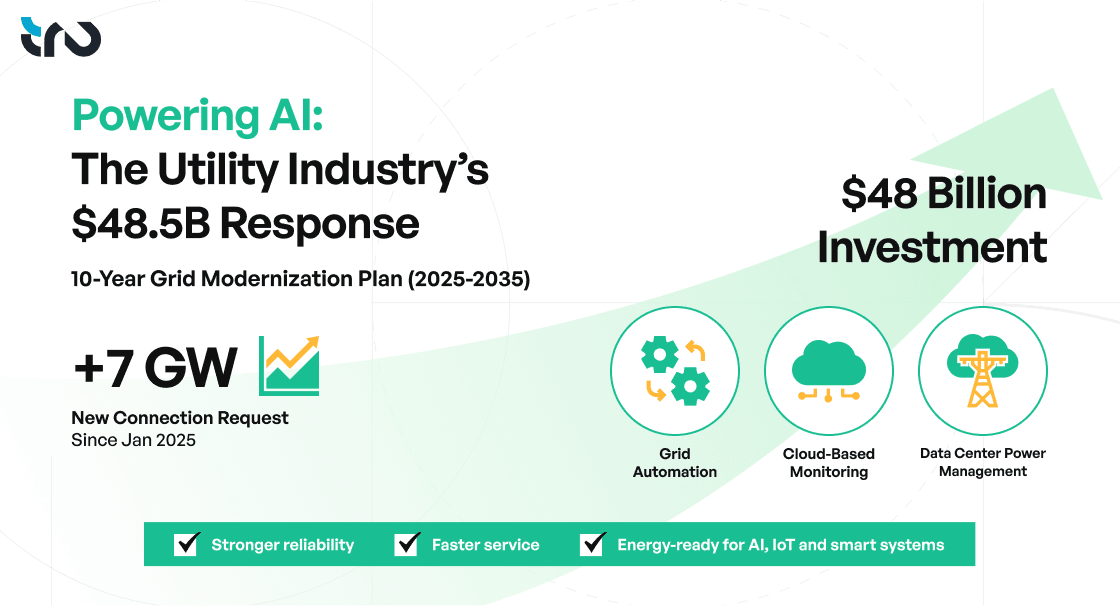
Digital innovation is transforming utilities at scale—something Tru understands well. Learn more about Tru’s experience in leading digital innovation.
Steps to Successfully Implementing Digital Solutions
Adopting digital technologies in the power and utility sector requires a clear and structured approach. Here are four key steps to ensure success:
• Assessment
Start by reviewing existing systems and identifying areas that need improvement. This helps companies understand current gaps and set the right direction.
• Strategic Planning
Based on that assessment, a tailored digital transformation strategy is built that aligns with the company's goals. This ensures the digital shift supports both short-term priorities and long-term growth.
• Solutions Deployment
Now, come to implementing specific solutions and strategies, such as IoT devices, AI tools, and cloud integration into industries’ daily operations. These technologies help modernize systems, boost efficiency, and reduce operational costs.
• Employee Training
To make it all work, companies need to ensure that teams are well-prepared to work with new systems. Training programs help employees adapt smoothly and get the most out of digital tools.
The Critical Role of Digital Solutions in Power and Utilities
Power and utility companies today are under pressure from rising costs, changing demand, and higher customer expectations. Digital solutions help address these challenges by modernizing infrastructure and enabling faster, data-driven decisions.
They improve how quickly issues are identified and resolved, while also enhancing service reliability and communications. For customers, this means more personalized services, quicker updates, and consistent energy access.
According to the International Energy Agency, reducing operational and maintenance (O&M) costs by just 5% through the digital transformation could save the sector up to $20 billion every year through 2040.
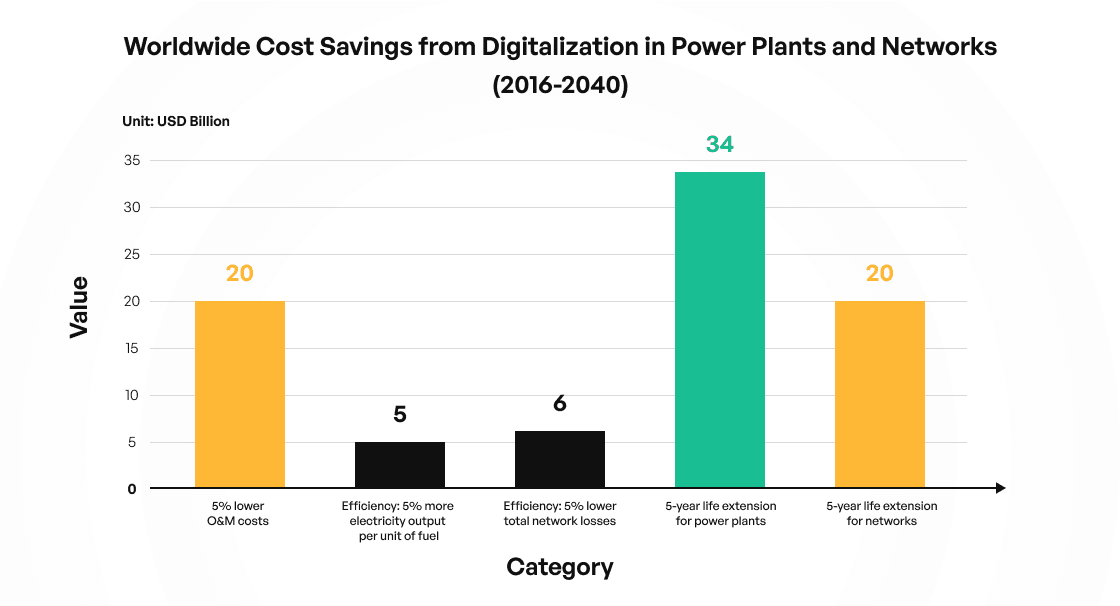
Conclusion
Digital transformation solutions help utilities replace outdated systems and manual processes. They bring real-time visibility, improve decision-making, and reduce long-term costs. These tools also support cleaner energy use and more reliable service delivery. As demands rise, a smarter digital foundation becomes essential for lasting progress.
